Comparison Test: 2021 Ford Mustang Mach-E vs. 2020 Tesla Model Y
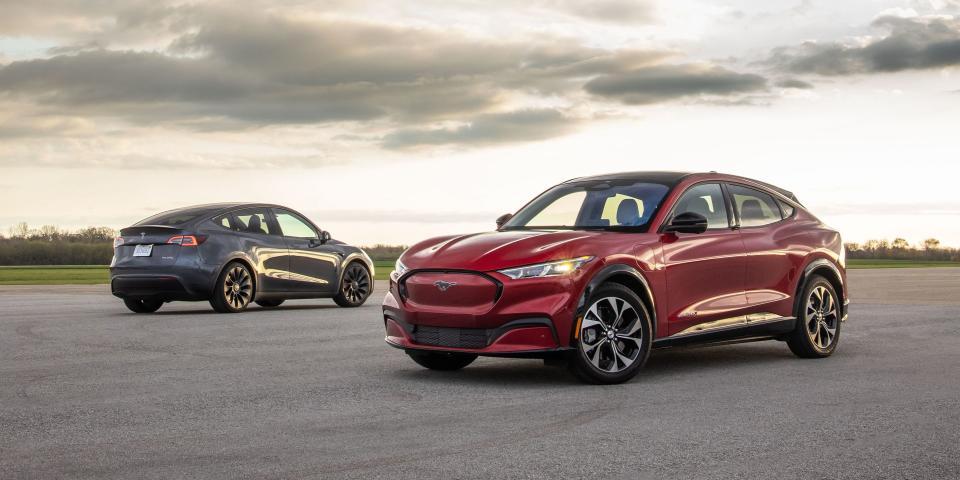
Corvette versus Porsche 911. Camaro versus Mustang. Camry and Accord. The major automotive rivalries seem like they've always existed, but every grudge has a genesis story. As EVs become more common, new rivalries are beginning to emerge. Tesla would like you to think that all other electric vehicles are inferior to its offerings, and the brand's proprietary DC fast-charging network thoughtfully spread over the United States is indeed second to none.
Somewhere to plug in and recharge should be a major consideration for EV buyers, but it shouldn't be the only consideration. Like gas-powered cars, EVs are more than just appliances to move us from home to the store. Regardless of what powers it, a good car should handle well and provide a fun and lively driving experience, but it should also be comfortable, refined, and offer the best possible value. Enter the new Ford Mustang Mach-E. In its big-battery all-wheel-drive form, the Mach-E E4X is the sort of opponent to Tesla's Model Y Performance that is sure to start a long and bitter rivalry for these two American brands.
This might be the first EV test where we won't so much as discuss range anxiety because the $56,400 Mach-E in E4X trim can go 270 miles between charges (per the EPA's anything-but-straight yardstick) and the Tesla comes in at 291 miles.
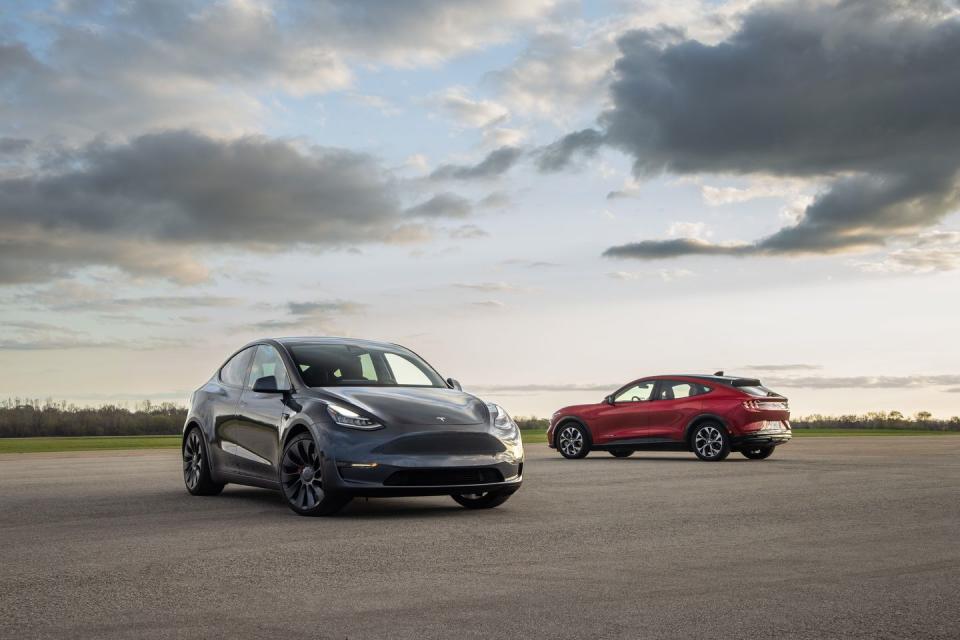
Before you post your comment below, we'll let you know that we're aware that the Model Y Performance isn't the most direct competitor to the 346-hp Mach-E Ford loaned us. The $62,190 Model Y Performance lines up better with the upcoming 480-hp Mach-E GT. A better foil for the Mach-E E4x would be the $53,690 Model Y Long Range, but Tesla wouldn't cough one up and we were unable to find one to rent or borrow. We did, however, land a more powerful Model Y Performance that has 178 horsepower for the front induction AC motor and 240 horses for the rear synchronous motor. Tesla is so unhelpful that we had to look through federal documents for those power figures.
While an admittedly imperfect pairing, the less-powerful Model Y probably wouldn't have affected the finishing order. But this is surely the first of many more comparisons as Tesla and Ford give birth to a new rivalry.
2nd Place:
Tesla Model Y
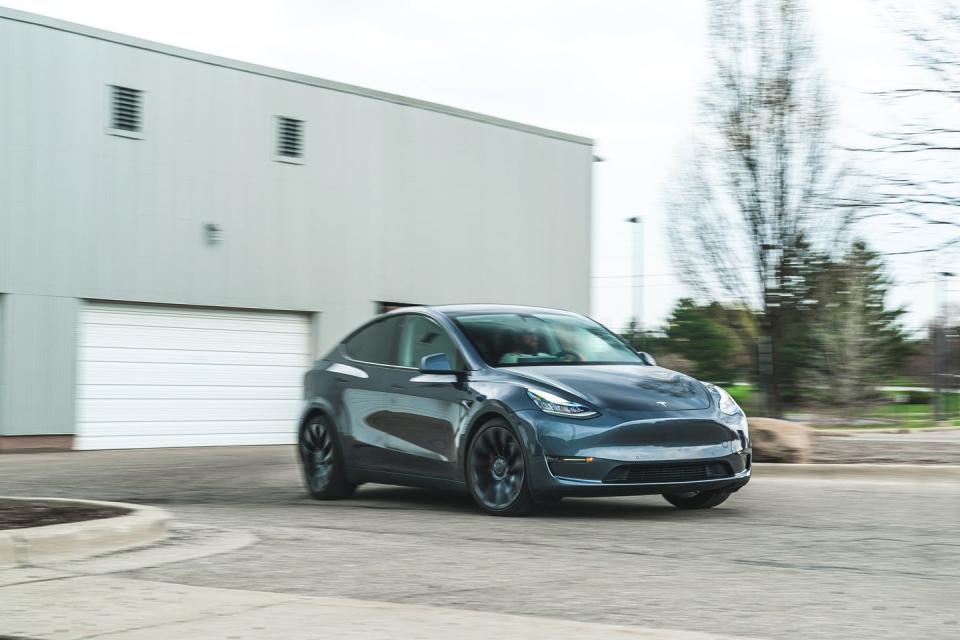
Highs: Access to a fast-charging network that is second to none, muscle-car straight-line performance, curb appeal.
Lows: Disconnected chassis, troublesome build quality, single screen for all controls still doesn't work.
This Model Y is a head-scratcher. It is essentially a taller Model 3—a car we like—with a slightly different wheel-and-tire combo, a higher roof, longer gearing from the larger wheels and tires, and yet if you drive the two back to back you might think they have nothing in common. While the 3 is a joy, the Y isn't.
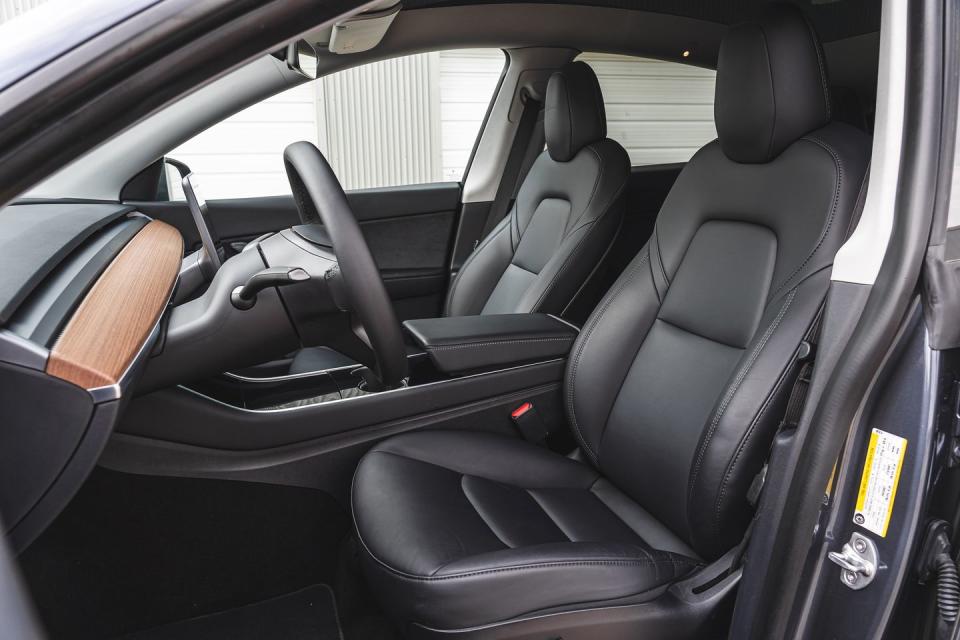
What the Y does have is Autopilot. And judging from the interest of other drivers about the Tesla's ability to sort-of drive itself, hands-off tech is important to would-be buyers. The system isn't yet fully baked, but updates and changes are always rolling out, provided you selected the $10,000 Full Self-Driving option.
What is fully baked is the Y's powertrain. While we may not know exactly how much power they make together—it's not as simple as adding the horsepower numbers since the motors may achieve them at different speeds—the Y's two motors send it to 60 mph in fleet 3.6 seconds and through the quarter-mile in 12.1 seconds at 113 mph. It's easy to extract that performance, too. Just keep the wheel pointed straight, floor it, and go. You'll dust most Mustangs, the ones that burn gas.
In the interest of making an apples-to-apples comparison, we perform a range test that keeps the vehicle running at a steady 75 mph until the battery is nearly depleted. In that test, the Model Y covered 230 miles, which is a great result for an EV. But the less-expensive Mach-E with a larger battery managed 250 miles in the same test.
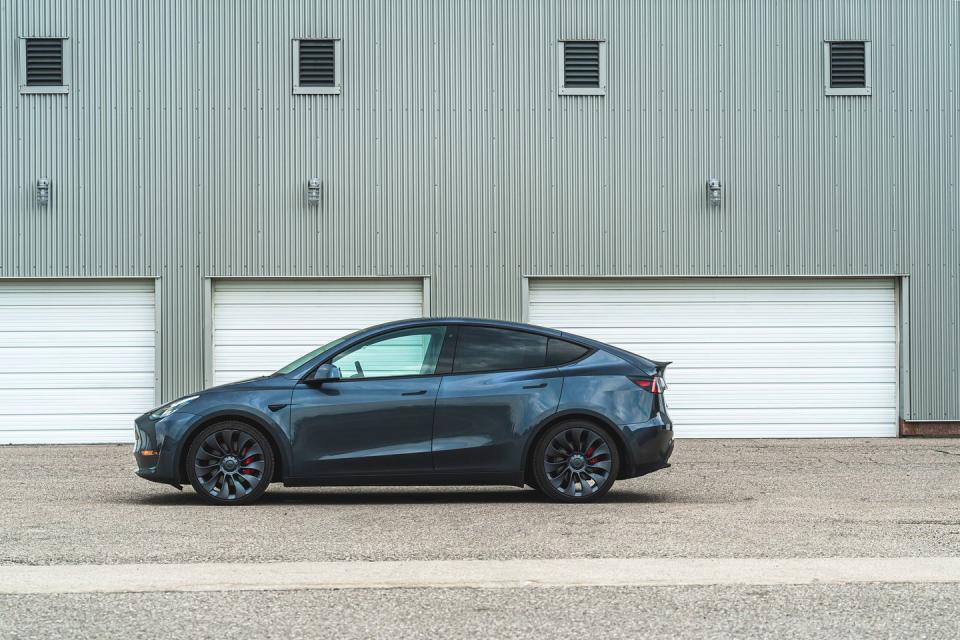
Tesla fits Pirelli P Zero PZ4 Elect tires to the Performance version, and those sticky summer tires aren't as efficient and can't stretch the range as much as more dedicated low-rolling-resistance rubber. The major benefit of those tires is that they have a lot of grip. On the skidpad, the Y held on at 0.94 g and helped stop it from 70 mph in a short 154 feet. Those performances are that much more impressive when you consider the Y weighs 4439 pounds. But start hustling the Y Performance down a curvy road and any relationship between the sweet-handling 3 Performance and Model Y Performance becomes hard to see.
Turning the Y's small-diameter steering wheel requires lots of effort to get it to turn. We're fine with high efforts, so long as the force is communicative and natural, but the Y's is rather numb. Once you deviate from going straight and start bending into corners, the Y becomes a bit nervous and darty, vectoring and re-vectoring like a poorly tuned video-game controller. Drive the Y hard and it seems out of step, like there is a glitch in software.

 Yahoo Autos
Yahoo Autos 